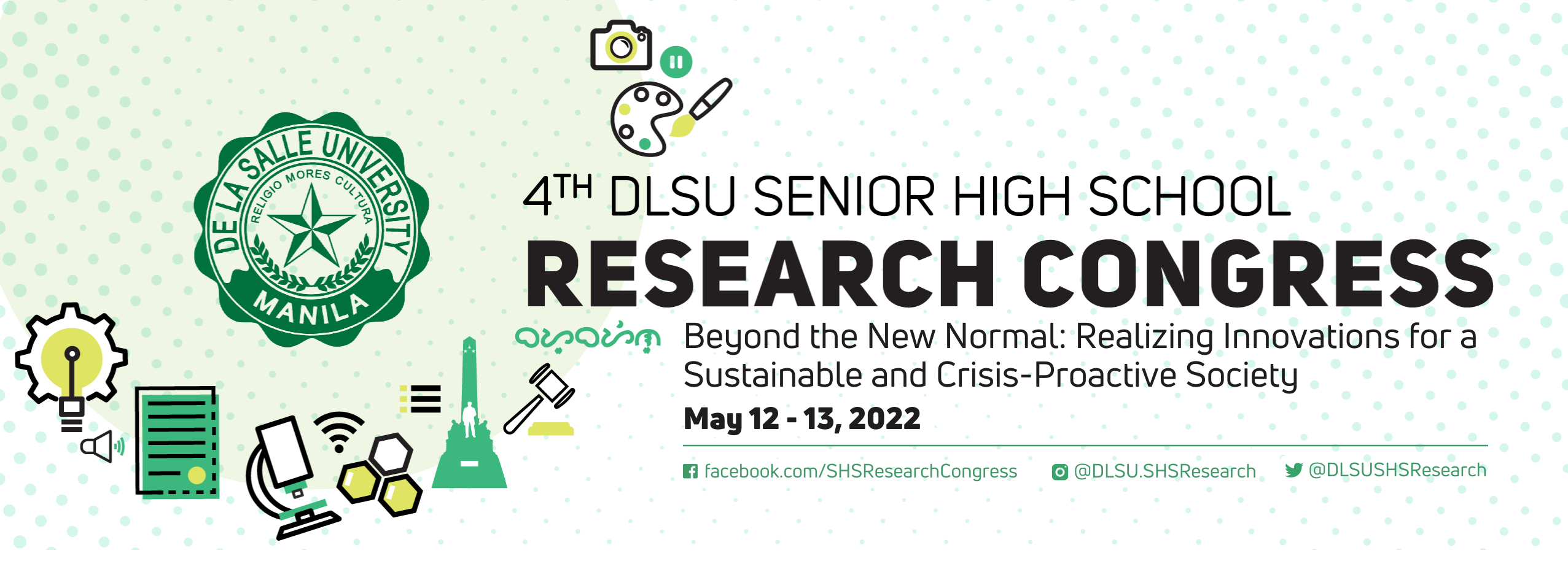The nature of cyberbullying among senior high students in DLSU
Document Types
Poster Presentation
Research Advisor (Last Name, First Name, Middle Initial)
Charibeth K. Cheng
Start Date
13-5-2022 8:00 AM
End Date
13-5-2022 10:00 AM
Abstract/Executive Summary
Cyberbullying can be defined as an act of aggression carried out to inflict harm through means of electronic communication (Smith et al., 2008). With the pandemic ongoing and school shifting to online, students stay online longer, resulting in being more exposed to cyberbullying. The purpose of this study is to determine the behavior of victims and bystanders when they experience or witness cyberbullying; as well determine their opinion towards it. Following Li (2010)’s methodology and guided by the research questions - (a) What happens after students are cyberbullied? (b) What do students do when witnessing cyberbullying? (c) Why do victims not report the incidents? and (d) What are students’ opinions about cyberbullying? - this study conducted an online survey on 135 senior high students from DLSU Manila and compared the results with Li (2010). Based on the results, very few students experienced cyberbullying with only 30% cyberbullied once or twice. This study found that victims are passive and would rather do nothing. Reasons for not reporting included fear of the bully’s revenge, and fear of being restricted access to technology. The same applies to bystanders where most would rather just watch or leave the online environment. Students overall saw cyberbullying as a problem and suggested proper education as the solution.
Keywords
cyberbullying; bystander; senior high school students; victims; witness
Research Theme (for Paper Presentation and Poster Presentation submissions only)
Family, Relations, and Social Structure (FRS)
The nature of cyberbullying among senior high students in DLSU
Cyberbullying can be defined as an act of aggression carried out to inflict harm through means of electronic communication (Smith et al., 2008). With the pandemic ongoing and school shifting to online, students stay online longer, resulting in being more exposed to cyberbullying. The purpose of this study is to determine the behavior of victims and bystanders when they experience or witness cyberbullying; as well determine their opinion towards it. Following Li (2010)’s methodology and guided by the research questions - (a) What happens after students are cyberbullied? (b) What do students do when witnessing cyberbullying? (c) Why do victims not report the incidents? and (d) What are students’ opinions about cyberbullying? - this study conducted an online survey on 135 senior high students from DLSU Manila and compared the results with Li (2010). Based on the results, very few students experienced cyberbullying with only 30% cyberbullied once or twice. This study found that victims are passive and would rather do nothing. Reasons for not reporting included fear of the bully’s revenge, and fear of being restricted access to technology. The same applies to bystanders where most would rather just watch or leave the online environment. Students overall saw cyberbullying as a problem and suggested proper education as the solution.


